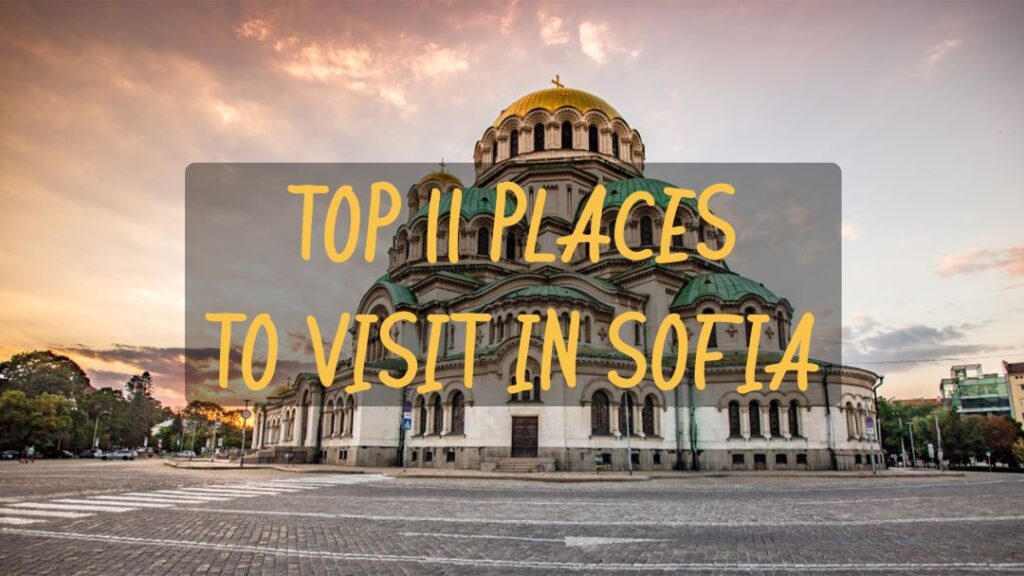Welcome to Sofia, the vibrant capital of Bulgaria. Sofia is a city rich in history, culture, and beauty. Whether you love architecture, nature, or history, Sofia has something for everyone. In this article, we will explore the 11 best places to visit in Sofia. Get ready to discover the heart of Bulgaria and see why Sofia is such a fascinating city.
1. Alexander Nevsky Cathedral
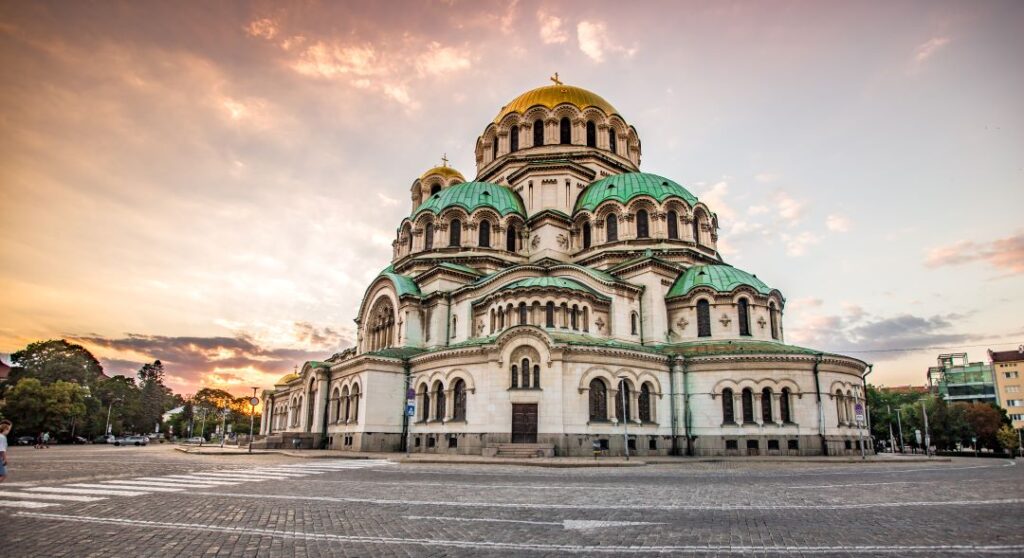
The Alexander Nevsky Cathedral is one of Sofia’s most iconic landmarks. Built between 1882 and 1912, it was created to honor the Russian soldiers who died during the Russo-Turkish War. This grand cathedral, with its stunning golden domes, is one of the largest Eastern Orthodox cathedrals in the world.
Inside, you will find beautiful frescoes and icons that reflect Bulgaria’s rich religious heritage. The cathedral is not only a place of worship but also a symbol of Bulgarian pride and history. Its architecture is a mix of Neo-Byzantine and Russian Revival styles, making it a must-see for visitors.
Address: Alexander Nevsky Square, Sofia 1000, Bulgaria
Opening Times: Daily from 7:00 AM to 7:00 PM
Cost of Entry: Free
2. National Museum of Military History

The National Museum of Military History offers a deep dive into Bulgaria’s military past. Established in 1916, the museum showcases a vast collection of military artifacts, including weapons, uniforms, and medals.
You can explore exhibits that cover different periods of Bulgarian history, from ancient times to modern-day conflicts. The outdoor exhibition features tanks, aircraft, and other military vehicles. This museum provides a comprehensive look at the bravery and sacrifices of Bulgarian soldiers through the ages.
Address: 92 Cherkovna Street, Sofia 1505, Bulgaria
Opening Times: Wednesday to Sunday from 10:00 AM to 6:00 PM
Cost of Entry: 10 BGN for adults, 5 BGN for students and seniors
3. Ivan Vazov National Theater

The Ivan Vazov National Theater is a cultural gem in Sofia. Named after Bulgaria’s beloved writer Ivan Vazov, this theater was founded in 1904. It is the oldest and most prestigious theater in the country. The building itself is an architectural masterpiece with its neoclassical design and intricate details.
Inside, you can enjoy a variety of performances, including plays, ballets, and operas. The theater’s beautiful park setting adds to its charm, making it a perfect spot to enjoy Bulgarian culture.
Address: 5 Dyakon Ignatiy Street, Sofia 1000, Bulgaria
Opening Times: Check the schedule for performances
Cost of Entry: Varies by performance
4. Banya Bashi Mosque

The Banya Bashi Mosque is a symbol of Sofia’s diverse cultural heritage. Built in 1566 during the Ottoman rule, it is the only active mosque in the city. The mosque was designed by the famous Ottoman architect Mimar Sinan, known for his beautiful and functional structures. Banya Bashi means “many baths,” a reference to the thermal springs found nearby. The mosque’s striking minaret and dome stand out in the Sofia skyline, making it a significant historical and architectural site.
Address: 20 Maria Luiza Blvd, Sofia 1000, Bulgaria
Opening Times: Daily from 5:00 AM to 10:00 PM
Cost of Entry: Free
5. National Palace of Culture
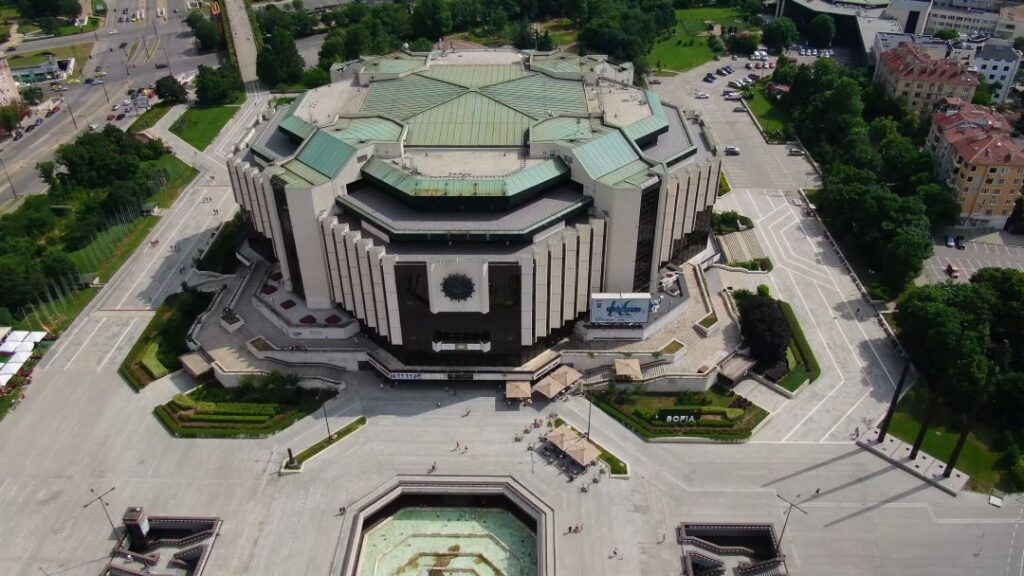
The National Palace of Culture, also known as NDK, is the largest multifunctional conference and exhibition center in Southeast Europe. Opened in 1981 to commemorate Bulgaria’s 1300th anniversary, NDK hosts various cultural events, including concerts, exhibitions, and conferences. The building itself is a marvel of modern architecture, with its grand halls and impressive design. Surrounded by beautiful gardens and fountains, the National Palace of Culture is a hub of cultural activity in Sofia.
Address: 1 Bulgaria Blvd, Sofia 1463, Bulgaria
Opening Times: Daily from 8:00 AM to 8:00 PM
Cost of Entry: Varies by event
6. Pancharevo Lake
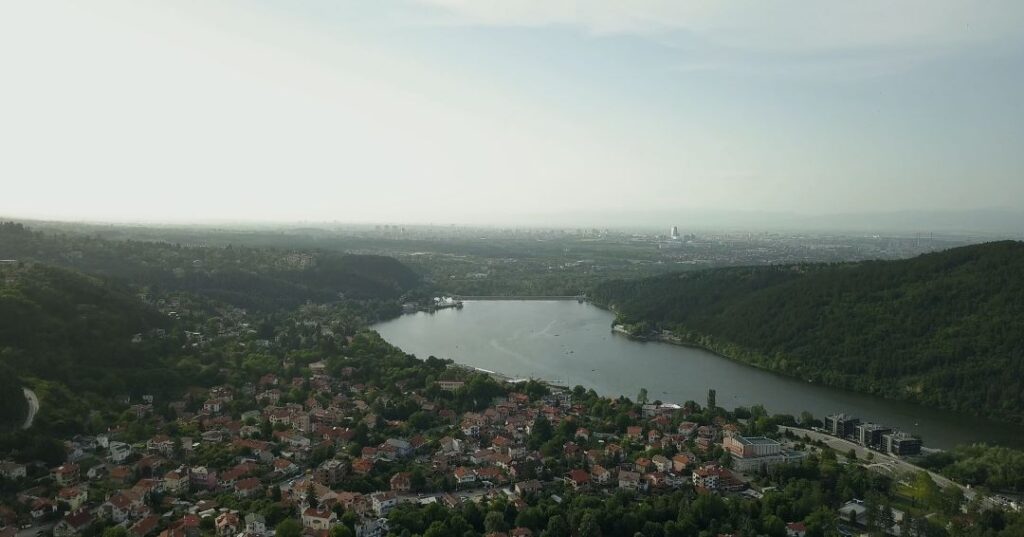
Pancharevo Lake is a serene getaway just outside Sofia. It is a popular spot for outdoor activities such as boating, fishing, and picnicking. The lake is surrounded by picturesque hills and forests, making it an ideal place for nature lovers. In addition to its natural beauty, the area has historical significance with ruins of old Roman baths nearby. Pancharevo Lake offers a perfect escape from the city’s hustle and bustle, providing a tranquil setting to relax and enjoy nature.
Address: Pancharevo, Sofia 1137, Bulgaria
Opening Times: Always open
Cost of Entry: Free
7. Sofia Zoo
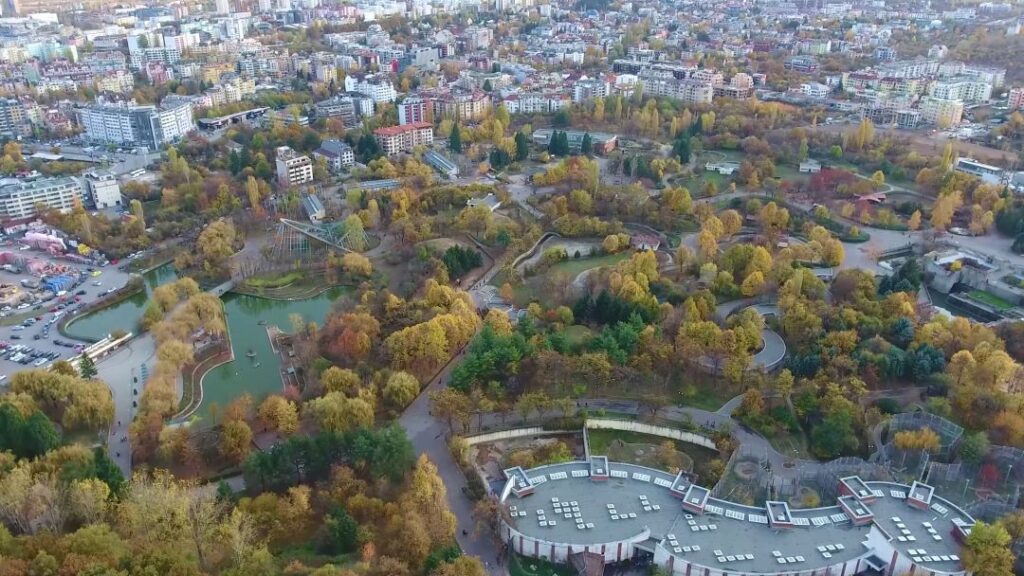
Sofia Zoo, established in 1888, is the oldest and largest zoo in Bulgaria. It spans over 360 acres and is home to more than 2000 animals from 280 species. Visitors can see a wide variety of animals, including lions, elephants, and exotic birds. The zoo is dedicated to conservation and education, offering programs for children and adults alike. With its well-maintained enclosures and beautiful park setting, Sofia Zoo is a fun and educational place for families to visit.
Address: 1 Srebarna Street, Sofia 1407, Bulgaria
Opening Times: Daily from 9:00 AM to 6:00 PM
Cost of Entry: 4 BGN for adults, 2 BGN for children and seniors
8. Vitosha Mountain
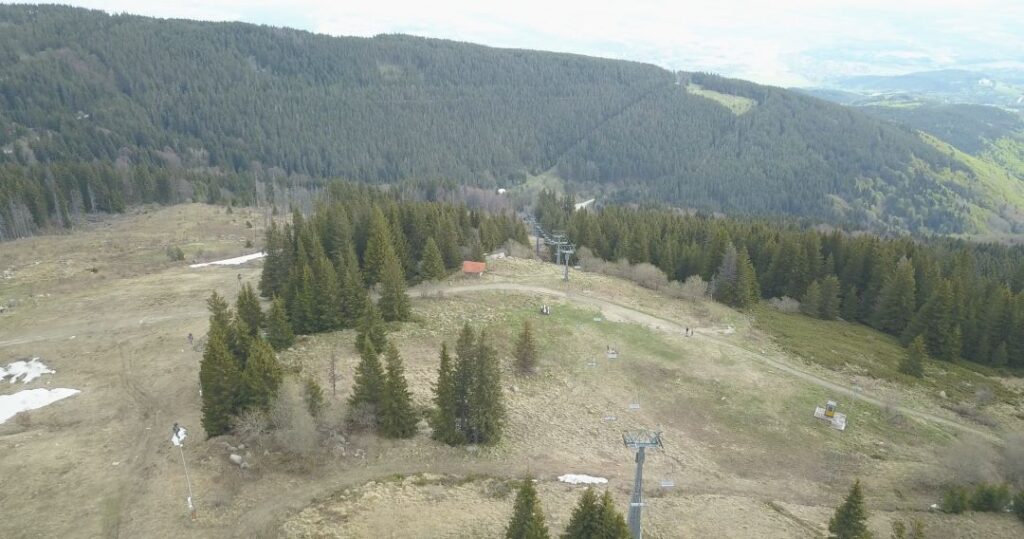
Vitosha Mountain is a natural wonder just a short drive from Sofia. It is a popular destination for hiking, skiing, and other outdoor activities. The mountain offers stunning views of Sofia and the surrounding countryside. In the winter, Vitosha is a favorite spot for skiing and snowboarding, while in the summer, it’s perfect for hiking and picnicking. The Vitosha Nature Park, established in 1934, is the oldest nature park in the Balkans, providing a haven for wildlife and natural beauty.
Address: Vitosha Mountain, Sofia, Bulgaria
Opening Times: Always open
Cost of Entry: Free
9. Regional History Museum of Sofia
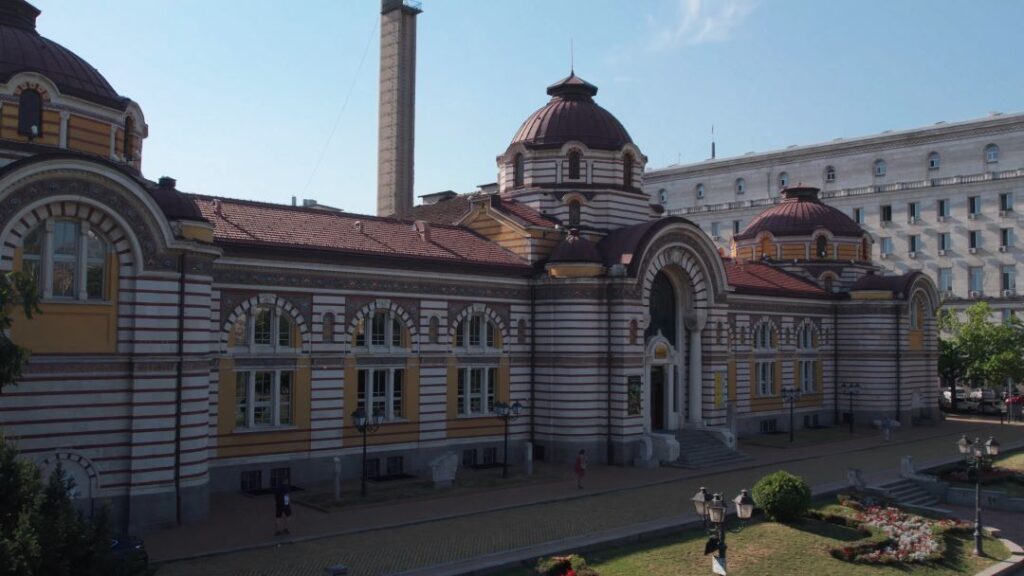
The Regional History Museum of Sofia is housed in the beautiful building of the former Central Mineral Baths. Opened in 2015, the museum showcases the rich history of Sofia from ancient times to the present day. Exhibits include archaeological finds, historical artifacts, and interactive displays. The museum also features the mineral springs that have been used for centuries for their healing properties. It’s a great place to learn about Sofia’s past and its cultural heritage.
Address: 1 Banski Square, Sofia 1000, Bulgaria
Opening Times: Tuesday to Sunday from 10:00 AM to 6:00 PM
Cost of Entry: 6 BGN for adults, 2 BGN for students and seniors
10. National Museum of History

The National Museum of History is one of Bulgaria’s largest and most important museums. It was established in 1973 and houses over 650,000 exhibits. The museum’s collection covers all periods of Bulgarian history, from prehistoric times to the present day. Visitors can see ancient artifacts, medieval treasures, and exhibits on Bulgaria’s recent history. The museum is located in the former residence of the last Communist leader of Bulgaria, adding to its historical significance.
Address: 16 Vitoshko Lale Street, Sofia 1618, Bulgaria
Opening Times: Tuesday to Sunday from 9:30 AM to 6:00 PM
Cost of Entry: 10 BGN for adults, 1 BGN for students and seniors
11. Church of Saint George
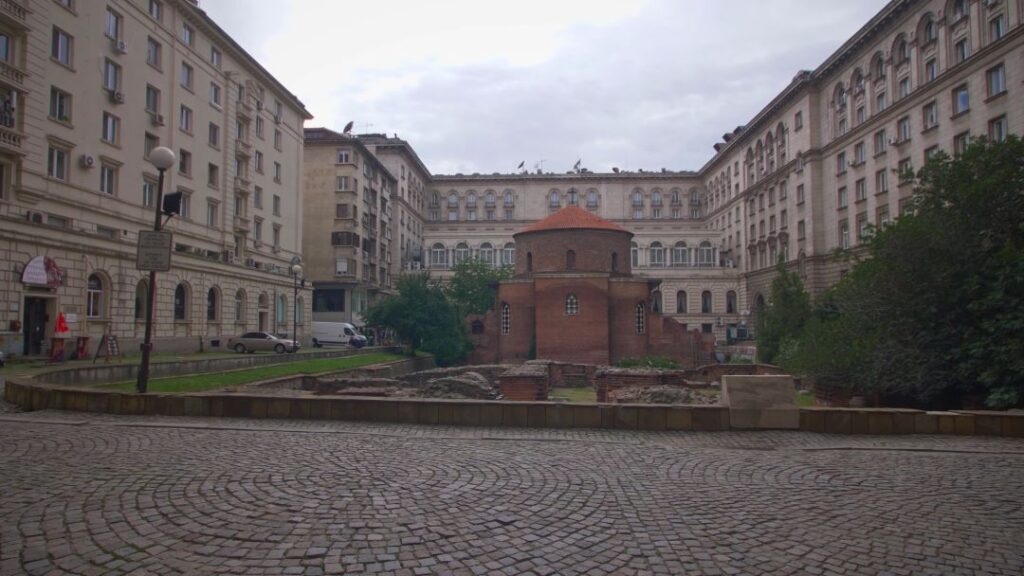
The Church of Saint George, also known as the Rotunda, is one of Sofia’s oldest and most well-preserved buildings. It was built in the 4th century during the Roman Empire and is famous for its well-preserved frescoes. The church is a hidden gem, located in the courtyard of the Presidential Palace. Its ancient walls and beautiful frescoes provide a glimpse into Sofia’s early Christian history. Despite its small size, the Church of Saint George is a significant historical and religious site in Sofia.
Address: 2 Ploshtad Sveta Nedelya, Sofia 1000, Bulgaria
Opening Times: Daily from 8:00 AM to 7:00 PM
Cost of Entry: Free
What is Sofia’s History?
Sofia’s history is long and rich, dating back over 2,000 years. The city was originally founded by the Thracians and was known as Serdica during the Roman era. It became an important city in the Roman Empire and was later conquered by the Byzantine Empire. During the Middle Ages, Sofia was a key center of Bulgarian culture and religion.
It fell under Ottoman rule in the 14th century and remained part of the Ottoman Empire for nearly 500 years. In the late 19th century, Sofia was liberated from Ottoman rule and became the capital of the newly independent Bulgaria. Throughout the 20th century, Sofia developed into a modern European city while preserving its historical heritage. Today, Sofia is a vibrant city that blends its ancient past with contemporary culture.
How to Spend Time in Sofia?
Spending time in Sofia offers a mix of history, culture, and nature. Start your day with a visit to the Alexander Nevsky Cathedral, then head to the National Museum of Military History to learn about Bulgaria’s military past. Enjoy a stroll through the city’s parks, such as Borisova Gradina or Yuzhen Park. For lunch, try traditional Bulgarian cuisine at a local restaurant. In the afternoon, visit the Ivan Vazov National Theater and
explore the nearby Vitosha Boulevard for shopping and people-watching. If you love nature, take a short trip to Vitosha Mountain for hiking or skiing, depending on the season. End your day with a relaxing visit to Pancharevo Lake or a cultural event at the National Palace of Culture. Sofia has something for everyone, making it easy to fill your days with interesting activities.
Why is Sofia So Famous?
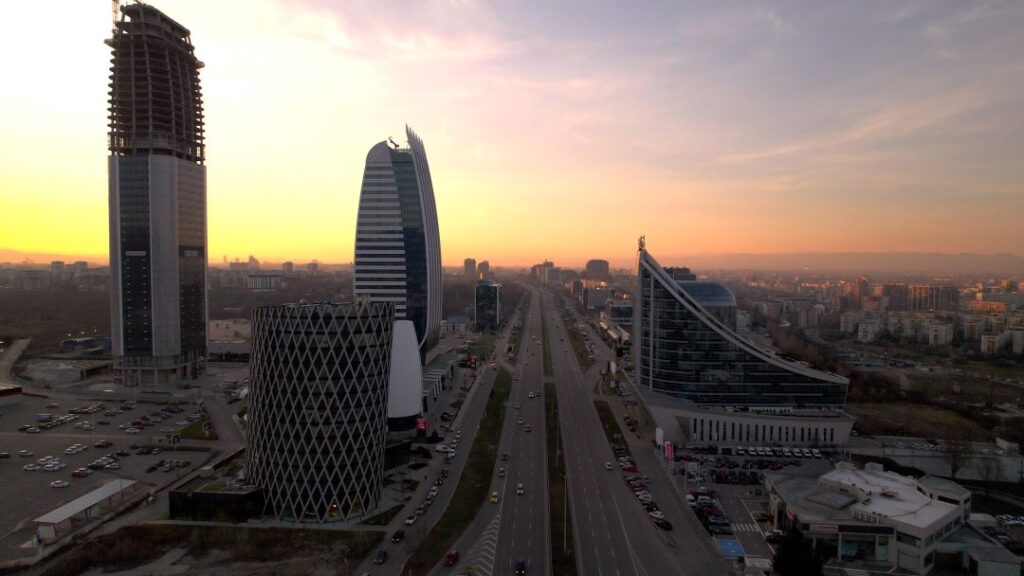
Sofia is famous for its rich history and cultural heritage. As one of the oldest cities in Europe, it has many historical landmarks, such as the Alexander Nevsky Cathedral and the Church of Saint George. Sofia is also known for its vibrant cultural scene, with theaters, museums, and galleries showcasing Bulgarian arts and history.
The city’s location at the foot of Vitosha Mountain makes it a popular destination for outdoor enthusiasts who enjoy hiking and skiing. Additionally, Sofia’s thermal springs and mineral baths are renowned for their healing properties. The blend of historical and modern attractions, along with its natural beauty, makes Sofia a unique and famous city.
Is Sofia Very Expensive?
Sofia is relatively affordable compared to many other European capitals. Accommodation, food, and transportation are reasonably priced, making it a budget-friendly destination for travelers. You can find a variety of accommodation options, from budget hostels to mid-range hotels, and even luxury establishments. Eating out is also affordable, with many restaurants offering delicious meals at reasonable prices.
Public transportation, including buses, trams, and the metro, is inexpensive and efficient. While some tourist attractions charge an entry fee, many museums and historical sites have low admission costs. Overall, Sofia offers good value for money, allowing visitors to enjoy the city without breaking the bank.
How Many Days Do You Need in Sofia?
To fully experience Sofia, you should plan to spend at least three to four days in the city. This allows you enough time to visit the main attractions, such as the Alexander Nevsky Cathedral, National Museum of Military History, and Vitosha Mountain. You can also explore the city’s parks, museums, and theaters. If you have more time, consider taking day trips to nearby destinations, such as Pancharevo Lake or the Rila Monastery. Three to four days give you a good balance of sightseeing and relaxation, ensuring you can appreciate the city’s rich history and vibrant culture.
Why is Sofia the Most Liveable City?
Sofia is considered one of the most liveable cities in Europe due to its high quality of life. The city offers a low cost of living, affordable housing, and excellent public transportation. Sofia has a rich cultural scene, with numerous theaters, museums, and galleries, providing residents with plenty of entertainment options.
The city’s parks and green spaces offer a respite from urban life, while Vitosha Mountain provides opportunities for outdoor activities. Sofia’s healthcare and education systems are also highly regarded. Additionally, the city’s strategic location and growing economy attract many businesses and professionals, contributing to its livability.
Why You Must Visit Sofia?
You must visit Sofia to experience its unique blend of history, culture, and natural beauty. The city offers numerous historical landmarks, such as the Alexander Nevsky Cathedral and the Church of Saint George, which showcase its rich past. Sofia’s vibrant cultural scene includes theaters, museums, and galleries, providing endless opportunities for exploration.
The city’s location at the foot of Vitosha Mountain makes it a haven for outdoor enthusiasts, offering hiking, skiing, and stunning views. Sofia’s thermal springs and mineral baths are perfect for relaxation. Additionally, the city’s affordable prices and friendly atmosphere make it an attractive destination for travelers.
Where is Sofia Located in Europe?
Sofia is located in the western part of Bulgaria, in Southeast Europe. It lies at the foot of Vitosha Mountain, near the geographical center of the Balkan Peninsula. The city is situated on the banks of the Iskar River, which flows into the Danube. Sofia’s strategic location has historically made it a crossroads of cultures and trade routes.
It is well-connected by road, rail, and air, with Sofia International Airport providing access to many European and international destinations. The city’s central location in the Balkans makes it an ideal base for exploring the region.
Can I Do Sofia in 2 Days?
Yes, you can explore Sofia in 2 days if you plan carefully. Here’s a suggested itinerary for a 2-day trip:
Day 1:
- Morning: Start with a visit to the Alexander Nevsky Cathedral.
- Late Morning: Walk to the nearby National Museum of Military History.
- Afternoon: Have lunch at a local restaurant and then visit the Ivan Vazov National Theater.
- Evening: Stroll along Vitosha Boulevard and enjoy dinner at a traditional Bulgarian restaurant.
Day 2:
- Morning: Head to Vitosha Mountain for a hike or a cable car ride for panoramic views.
- Afternoon: Visit the Regional History Museum of Sofia and explore the area around the Central Mineral Baths.
- Evening: Relax at Pancharevo Lake or attend a cultural event at the National Palace of Culture.
This plan allows you to see the highlights of Sofia in a short amount of time.
What is the Best Month to Visit Sofia?

The best month to visit Sofia is September. The weather is pleasant, with mild temperatures and plenty of sunshine. It’s a great time to explore the city’s outdoor attractions, such as Vitosha Mountain and the city parks.
September also has fewer tourists compared to the summer months, allowing you to enjoy the sights without the crowds. Additionally, several cultural events and festivals take place in September, providing an opportunity to experience Bulgarian traditions and celebrations. Whether you’re interested in history, culture, or nature, September offers the perfect conditions for exploring Sofia.
Is Sofia Worth Visiting?
Yes, Sofia is definitely worth visiting. The city offers a rich tapestry of history, culture, and natural beauty. From the magnificent Alexander Nevsky Cathedral to the serene Vitosha Mountain, there is something for every type of traveler.
Sofia’s museums and theaters provide a deep dive into Bulgarian culture and history, while its parks and green spaces offer relaxation and recreation. The city’s affordability makes it accessible to a wide range of visitors. Whether you’re exploring ancient ruins, enjoying local cuisine, or hiking in the mountains, Sofia promises a memorable and enriching experience.
Conclusion
Sofia, Bulgaria’s vibrant capital, is a city that beautifully blends history, culture, and nature. With its rich historical landmarks, diverse cultural scene, and stunning natural surroundings, Sofia offers something for every traveler.
Whether you’re exploring ancient churches, enjoying a theater performance, or hiking on Vitosha Mountain, Sofia promises a memorable experience. The city’s affordability, friendly atmosphere, and strategic location make it an ideal destination for anyone looking to discover the heart of Bulgaria. Plan your visit to Sofia and experience all the wonders this fascinating city has to offer.

